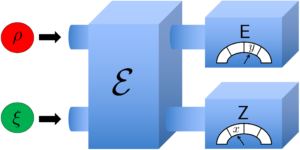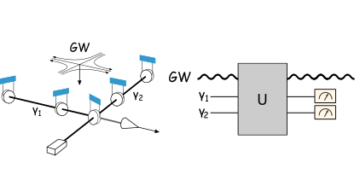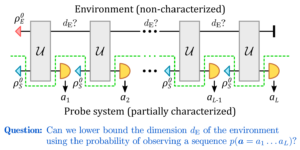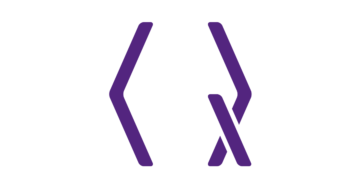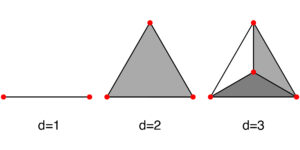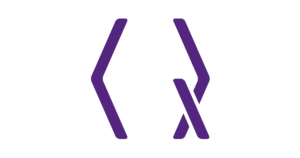1INO-CNR BEC Center and Department of Physics, University of Trento, Via Sommarive 14, I-38123 Trento, Italy
2Department of Physics and Astronomy, University of Ghent, Krijgslaan 281, 9000 Gent, Belgium
3Center for Quantum Physics, University of Innsbruck, 6020 Innsbruck, Austria
4Institute for Quantum Optics and Quantum Information of the Austrian Academy of Sciences, 6020 Innsbruck, Austria
5Theory Division, Saha Institute of Nuclear Physics, HBNI, 1/AF Bidhan Nagar, Kolkata 700064, India
Find this paper interesting or want to discuss? Scite or leave a comment on SciRate.
Abstract
Realizations of gauge theories in setups of quantum synthetic matter open up the possibility of probing salient exotic phenomena in condensed matter and high-energy physics, along with potential applications in quantum information and science technologies. In light of the impressive ongoing efforts to achieve such realizations, a fundamental question regarding quantum link model regularizations of lattice gauge theories is how faithfully they capture the quantum field theory limit of gauge theories. Recent work [79] has shown through analytic derivations, exact diagonalization, and infinite matrix product state calculations that the low-energy physics of $1+1$D $mathrm{U}(1)$ quantum link models approaches the quantum field theory limit already at small link spin length $S$. Here, we show that the approach to this limit also lends itself to the far-from-equilibrium quench dynamics of lattice gauge theories, as demonstrated by our numerical simulations of the Loschmidt return rate and the chiral condensate in infinite matrix product states, which work directly in the thermodynamic limit. Similar to our findings in equilibrium that show a distinct behavior between half-integer and integer link spin lengths, we find that criticality emerging in the Loschmidt return rate is fundamentally different between half-integer and integer spin quantum link models in the regime of strong electric-field coupling. Our results further affirm that state-of-the-art finite-size ultracold-atom and NISQ-device implementations of quantum link lattice gauge theories have the real potential to simulate their quantum field theory limit even in the far-from-equilibrium regime.
Featured image: Quench dynamics in the spin-$S$ $mathrm{U}(1)$ quantum link model in the weak-coupling regime within the target sector of Gauss’s law. The results are obtained from the infinite matrix product state technique. Time evolution of (a,b) the return rate and (c,d) the chiral condensate both show fast convergence for (a,c) half-integer and (b,d) integer link spin length $S$, although the case of integer $S$ shows overall faster convergence than the case of half-integer $S$. Both the converged return rate and the chiral condensate show good quantitative agreement for half-integer and integer $S$, as evidenced by the dotted black lines for $S=4$ in (a,c) [taken respectively from (b,d)] and for $S=7/2$ in (b,d) [taken respectively from (a,c)]. The approach to the thermodynamic limit in the quench dynamics of the chiral condensate in the weak-coupling regime for link spin lengths (e) $S=7/2$ and (f) $S=4$. The finite-size results are obtained from exact diagonalization, while those in the thermodynamic limit are calculated using the infinite matrix product state technique. In this target sector, we see much faster convergence to the thermodynamic limit for integer than for half-integer $S$.
Popular summary
► BibTeX data
► References
[1] Immanuel Bloch, Jean Dalibard, and Wilhelm Zwerger. “Many-body physics with ultracold gases”. Rev. Mod. Phys. 80, 885–964 (2008).
https://doi.org/10.1103/RevModPhys.80.885
[2] M. Lewenstein, A. Sanpera, and V. Ahufinger. “Ultracold atoms in optical lattices: Simulating quantum many-body systems”. OUP Oxford. (2012). url: https://books.google.de/books?id=Wpl91RDxV5IC.
https://books.google.de/books?id=Wpl91RDxV5IC
[3] R. Blatt and C. F. Roos. “Quantum simulations with trapped ions”. Nature Physics 8, 277–284 (2012).
https://doi.org/10.1038/nphys2252
[4] Philipp Hauke, Fernando M Cucchietti, Luca Tagliacozzo, Ivan Deutsch, and Maciej Lewenstein. “Can one trust quantum simulators?”. Reports on Progress in Physics 75, 082401 (2012).
https://doi.org/10.1088/0034-4885/75/8/082401
[5] P. Jurcevic, H. Shen, P. Hauke, C. Maier, T. Brydges, C. Hempel, B. P. Lanyon, M. Heyl, R. Blatt, and C. F. Roos. “Direct observation of dynamical quantum phase transitions in an interacting many-body system”. Phys. Rev. Lett. 119, 080501 (2017).
https://doi.org/10.1103/PhysRevLett.119.080501
[6] J. Zhang, G. Pagano, P. W. Hess, A. Kyprianidis, P. Becker, H. Kaplan, A. V. Gorshkov, Z.-X. Gong, and C. Monroe. “Observation of a many-body dynamical phase transition with a 53-qubit quantum simulator”. Nature 551, 601–604 (2017).
https://doi.org/10.1038/nature24654
[7] N. Fläschner, D. Vogel, M. Tarnowski, B. S. Rem, D.-S. Lühmann, M. Heyl, J. C. Budich, L. Mathey, K. Sengstock, and C. Weitenberg. “Observation of dynamical vortices after quenches in a system with topology”. Nature Physics 14, 265–268 (2018). url: https://doi.org/10.1038/s41567-017-0013-8.
https://doi.org/10.1038/s41567-017-0013-8
[8] M. Gring, M. Kuhnert, T. Langen, T. Kitagawa, B. Rauer, M. Schreitl, I. Mazets, D. Adu Smith, E. Demler, and J. Schmiedmayer. “Relaxation and prethermalization in an isolated quantum system”. Science 337, 1318–1322 (2012).
https://doi.org/10.1126/science.1224953
[9] Tim Langen, Sebastian Erne, Remi Geiger, Bernhard Rauer, Thomas Schweigler, Maximilian Kuhnert, Wolfgang Rohringer, Igor E. Mazets, Thomas Gasenzer, and Jörg Schmiedmayer. “Experimental observation of a generalized gibbs ensemble”. Science 348, 207–211 (2015).
https://doi.org/10.1126/science.1257026
[10] Brian Neyenhuis, Jiehang Zhang, Paul W. Hess, Jacob Smith, Aaron C. Lee, Phil Richerme, Zhe-Xuan Gong, Alexey V. Gorshkov, and Christopher Monroe. “Observation of prethermalization in long-range interacting spin chains”. Science Advances 3 (2017).
https://doi.org/10.1126/sciadv.1700672
[11] Michael Schreiber, Sean S. Hodgman, Pranjal Bordia, Henrik P. Lüschen, Mark H. Fischer, Ronen Vosk, Ehud Altman, Ulrich Schneider, and Immanuel Bloch. “Observation of many-body localization of interacting fermions in a quasirandom optical lattice”. Science 349, 842–845 (2015).
https://doi.org/10.1126/science.aaa7432
[12] Jae-yoon Choi, Sebastian Hild, Johannes Zeiher, Peter Schauß, Antonio Rubio-Abadal, Tarik Yefsah, Vedika Khemani, David A. Huse, Immanuel Bloch, and Christian Gross. “Exploring the many-body localization transition in two dimensions”. Science 352, 1547–1552 (2016).
https://doi.org/10.1126/science.aaf8834
[13] J. Smith, A. Lee, P. Richerme, B. Neyenhuis, P. W. Hess, P. Hauke, M. Heyl, D. A. Huse, and C. Monroe. “Many-body localization in a quantum simulator with programmable random disorder”. Nature Physics 12, 907–911 (2016).
https://doi.org/10.1038/nphys3783
[14] Harvey B. Kaplan, Lingzhen Guo, Wen Lin Tan, Arinjoy De, Florian Marquardt, Guido Pagano, and Christopher Monroe. “Many-body dephasing in a trapped-ion quantum simulator”. Phys. Rev. Lett. 125, 120605 (2020).
https://doi.org/10.1103/PhysRevLett.125.120605
[15] G. Semeghini, H. Levine, A. Keesling, S. Ebadi, T. T. Wang, D. Bluvstein, R. Verresen, H. Pichler, M. Kalinowski, R. Samajdar, A. Omran, S. Sachdev, A. Vishwanath, M. Greiner, V. Vuletić, and M. D. Lukin. “Probing topological spin liquids on a programmable quantum simulator”. Science 374, 1242–1247 (2021).
https://doi.org/10.1126/science.abi8794
[16] K. J. Satzinger, Y.-J Liu, A. Smith, C. Knapp, M. Newman, C. Jones, Z. Chen, C. Quintana, X. Mi, A. Dunsworth, C. Gidney, I. Aleiner, F. Arute, K. Arya, J. Atalaya, R. Babbush, J. C. Bardin, R. Barends, J. Basso, A. Bengtsson, A. Bilmes, M. Broughton, B. B. Buckley, D. A. Buell, B. Burkett, N. Bushnell, B. Chiaro, R. Collins, W. Courtney, S. Demura, A. R. Derk, D. Eppens, C. Erickson, L. Faoro, E. Farhi, A. G. Fowler, B. Foxen, M. Giustina, A. Greene, J. A. Gross, M. P. Harrigan, S. D. Harrington, J. Hilton, S. Hong, T. Huang, W. J. Huggins, L. B. Ioffe, S. V. Isakov, E. Jeffrey, Z. Jiang, D. Kafri, K. Kechedzhi, T. Khattar, S. Kim, P. V. Klimov, A. N. Korotkov, F. Kostritsa, D. Landhuis, P. Laptev, A. Locharla, E. Lucero, O. Martin, J. R. McClean, M. McEwen, K. C. Miao, M. Mohseni, S. Montazeri, W. Mruczkiewicz, J. Mutus, O. Naaman, M. Neeley, C. Neill, M. Y. Niu, T. E. O’Brien, A. Opremcak, B. Pató, A. Petukhov, N. C. Rubin, D. Sank, V. Shvarts, D. Strain, M. Szalay, B. Villalonga, T. C. White, Z. Yao, P. Yeh, J. Yoo, A. Zalcman, H. Neven, S. Boixo, A. Megrant, Y. Chen, J. Kelly, V. Smelyanskiy, A. Kitaev, M. Knap, F. Pollmann, and P. Roushan. “Realizing topologically ordered states on a quantum processor”. Science 374, 1237–1241 (2021).
https://doi.org/10.1126/science.abi8378
[17] Xiao Mi, Matteo Ippoliti, Chris Quintana, Ami Greene, Zijun Chen, Jonathan Gross, Frank Arute, Kunal Arya, Juan Atalaya, Ryan Babbush, Joseph C. Bardin, Joao Basso, Andreas Bengtsson, Alexander Bilmes, Alexandre Bourassa, Leon Brill, Michael Broughton, Bob B. Buckley, David A. Buell, Brian Burkett, Nicholas Bushnell, Benjamin Chiaro, Roberto Collins, William Courtney, Dripto Debroy, Sean Demura, Alan R. Derk, Andrew Dunsworth, Daniel Eppens, Catherine Erickson, Edward Farhi, Austin G. Fowler, Brooks Foxen, Craig Gidney, Marissa Giustina, Matthew P. Harrigan, Sean D. Harrington, Jeremy Hilton, Alan Ho, Sabrina Hong, Trent Huang, Ashley Huff, William J. Huggins, L. B. Ioffe, Sergei V. Isakov, Justin Iveland, Evan Jeffrey, Zhang Jiang, Cody Jones, Dvir Kafri, Tanuj Khattar, Seon Kim, Alexei Kitaev, Paul V. Klimov, Alexander N. Korotkov, Fedor Kostritsa, David Landhuis, Pavel Laptev, Joonho Lee, Kenny Lee, Aditya Locharla, Erik Lucero, Orion Martin, Jarrod R. McClean, Trevor McCourt, Matt McEwen, Kevin C. Miao, Masoud Mohseni, Shirin Montazeri, Wojciech Mruczkiewicz, Ofer Naaman, Matthew Neeley, Charles Neill, Michael Newman, Murphy Yuezhen Niu, Thomas E. O’Brien, Alex Opremcak, Eric Ostby, Balint Pato, Andre Petukhov, Nicholas C. Rubin, Daniel Sank, Kevin J. Satzinger, Vladimir Shvarts, Yuan Su, Doug Strain, Marco Szalay, Matthew D. Trevithick, Benjamin Villalonga, Theodore White, Z. Jamie Yao, Ping Yeh, Juhwan Yoo, Adam Zalcman, Hartmut Neven, Sergio Boixo, Vadim Smelyanskiy, Anthony Megrant, Julian Kelly, Yu Chen, S. L. Sondhi, Roderich Moessner, Kostyantyn Kechedzhi, Vedika Khemani, and Pedram Roushan. “Time-crystalline eigenstate order on a quantum processor”. Nature 601, 531–536 (2022).
https://doi.org/10.1038/s41586-021-04257-w
[18] Esteban A. Martinez, Christine A. Muschik, Philipp Schindler, Daniel Nigg, Alexander Erhard, Markus Heyl, Philipp Hauke, Marcello Dalmonte, Thomas Monz, Peter Zoller, and Rainer Blatt. “Real-time dynamics of lattice gauge theories with a few-qubit quantum computer”. Nature 534, 516–519 (2016).
https://doi.org/10.1038/nature18318
[19] N. Klco, E. F. Dumitrescu, A. J. McCaskey, T. D. Morris, R. C. Pooser, M. Sanz, E. Solano, P. Lougovski, and M. J. Savage. “Quantum-classical computation of schwinger model dynamics using quantum computers”. Phys. Rev. A 98, 032331 (2018).
https://doi.org/10.1103/PhysRevA.98.032331
[20] C. Kokail, C. Maier, R. van Bijnen, T. Brydges, M. K. Joshi, P. Jurcevic, C. A. Muschik, P. Silvi, R. Blatt, C. F. Roos, and P. Zoller. “Self-verifying variational quantum simulation of lattice models”. Nature 569, 355–360 (2019).
https://doi.org/10.1038/s41586-019-1177-4
[21] Natalie Klco, Martin J. Savage, and Jesse R. Stryker. “Su(2) non-abelian gauge field theory in one dimension on digital quantum computers”. Phys. Rev. D 101, 074512 (2020).
https://doi.org/10.1103/PhysRevD.101.074512
[22] Hsuan-Hao Lu, Natalie Klco, Joseph M. Lukens, Titus D. Morris, Aaina Bansal, Andreas Ekström, Gaute Hagen, Thomas Papenbrock, Andrew M. Weiner, Martin J. Savage, and Pavel Lougovski. “Simulations of subatomic many-body physics on a quantum frequency processor”. Phys. Rev. A 100, 012320 (2019).
https://doi.org/10.1103/PhysRevA.100.012320
[23] Frederik Görg, Kilian Sandholzer, Joaquín Minguzzi, Rémi Desbuquois, Michael Messer, and Tilman Esslinger. “Realization of density-dependent peierls phases to engineer quantized gauge fields coupled to ultracold matter”. Nature Physics 15, 1161–1167 (2019).
https://doi.org/10.1038/s41567-019-0615-4
[24] Christian Schweizer, Fabian Grusdt, Moritz Berngruber, Luca Barbiero, Eugene Demler, Nathan Goldman, Immanuel Bloch, and Monika Aidelsburger. “Floquet approach to $mathbb{Z}2$ lattice gauge theories with ultracold atoms in optical lattices”. Nature Physics 15, 1168–1173 (2019).
https://doi.org/10.1038/s41567-019-0649-7
[25] Alexander Mil, Torsten V. Zache, Apoorva Hegde, Andy Xia, Rohit P. Bhatt, Markus K. Oberthaler, Philipp Hauke, Jürgen Berges, and Fred Jendrzejewski. “A scalable realization of local u(1) gauge invariance in cold atomic mixtures”. Science 367, 1128–1130 (2020).
https://doi.org/10.1126/science.aaz5312
[26] Bing Yang, Hui Sun, Robert Ott, Han-Yi Wang, Torsten V. Zache, Jad C. Halimeh, Zhen-Sheng Yuan, Philipp Hauke, and Jian-Wei Pan. “Observation of gauge invariance in a 71-site bose–hubbard quantum simulator”. Nature 587, 392–396 (2020).
https://doi.org/10.1038/s41586-020-2910-8
[27] Zhao-Yu Zhou, Guo-Xian Su, Jad C. Halimeh, Robert Ott, Hui Sun, Philipp Hauke, Bing Yang, Zhen-Sheng Yuan, Jürgen Berges, and Jian-Wei Pan. “Thermalization dynamics of a gauge theory on a quantum simulator”. Science 377, 311–314 (2022).
https://doi.org/10.1126/science.abl6277
[28] U.-J. Wiese. “Ultracold quantum gases and lattice systems: quantum simulation of lattice gauge theories”. Annalen der Physik 525, 777–796 (2013).
https://doi.org/10.1002/andp.201300104
[29] Erez Zohar, J Ignacio Cirac, and Benni Reznik. “Quantum simulations of lattice gauge theories using ultracold atoms in optical lattices”. Reports on Progress in Physics 79, 014401 (2015).
https://doi.org/10.1088/0034-4885/79/1/014401
[30] M. Dalmonte and S. Montangero. “Lattice gauge theory simulations in the quantum information era”. Contemporary Physics 57, 388–412 (2016).
https://doi.org/10.1080/00107514.2016.1151199
[31] Mari Carmen Bañuls, Rainer Blatt, Jacopo Catani, Alessio Celi, Juan Ignacio Cirac, Marcello Dalmonte, Leonardo Fallani, Karl Jansen, Maciej Lewenstein, Simone Montangero, Christine A. Muschik, Benni Reznik, Enrique Rico, Luca Tagliacozzo, Karel Van Acoleyen, Frank Verstraete, Uwe-Jens Wiese, Matthew Wingate, Jakub Zakrzewski, and Peter Zoller. “Simulating lattice gauge theories within quantum technologies”. The European Physical Journal D 74, 165 (2020).
https://doi.org/10.1140/epjd/e2020-100571-8
[32] Yuri Alexeev, Dave Bacon, Kenneth R. Brown, Robert Calderbank, Lincoln D. Carr, Frederic T. Chong, Brian DeMarco, Dirk Englund, Edward Farhi, Bill Fefferman, Alexey V. Gorshkov, Andrew Houck, Jungsang Kim, Shelby Kimmel, Michael Lange, Seth Lloyd, Mikhail D. Lukin, Dmitri Maslov, Peter Maunz, Christopher Monroe, John Preskill, Martin Roetteler, Martin J. Savage, and Jeff Thompson. “Quantum computer systems for scientific discovery”. PRX Quantum 2, 017001 (2021).
https://doi.org/10.1103/PRXQuantum.2.017001
[33] Monika Aidelsburger, Luca Barbiero, Alejandro Bermudez, Titas Chanda, Alexandre Dauphin, Daniel González-Cuadra, Przemysław R. Grzybowski, Simon Hands, Fred Jendrzejewski, Johannes Jünemann, Gediminas Juzeliūnas, Valentin Kasper, Angelo Piga, Shi-Ju Ran, Matteo Rizzi, Germán Sierra, Luca Tagliacozzo, Emanuele Tirrito, Torsten V. Zache, Jakub Zakrzewski, Erez Zohar, and Maciej Lewenstein. “Cold atoms meet lattice gauge theory”. Philosophical Transactions of the Royal Society A: Mathematical, Physical and Engineering Sciences 380, 20210064 (2022).
https://doi.org/10.1098/rsta.2021.0064
[34] Erez Zohar. “Quantum simulation of lattice gauge theories in more than one space dimension—requirements, challenges and methods”. Philosophical Transactions of the Royal Society A: Mathematical, Physical and Engineering Sciences 380, 20210069 (2022).
https://doi.org/10.1098/rsta.2021.0069
[35] Natalie Klco, Alessandro Roggero, and Martin J Savage. “Standard model physics and the digital quantum revolution: thoughts about the interface”. Reports on Progress in Physics 85, 064301 (2022).
https://doi.org/10.1088/1361-6633/ac58a4
[36] S. Weinberg. “The quantum theory of fields”. Vol. 2: Modern Applications. Cambridge University Press. (1995). url: https://books.google.de/books?id=doeDB3_WLvwC.
https://books.google.de/books?id=doeDB3_WLvwC
[37] C. Gattringer and C. Lang. “Quantum chromodynamics on the lattice: An introductory presentation”. Lecture Notes in Physics. Springer Berlin Heidelberg. (2009). url: https://books.google.de/books?id=l2hZKnlYDxoC.
https://books.google.de/books?id=l2hZKnlYDxoC
[38] A. Zee. “Quantum field theory in a nutshell”. Princeton University Press. (2003). url: https://books.google.de/books?id=85G9QgAACAAJ.
https://books.google.de/books?id=85G9QgAACAAJ
[39] Hannes Bernien, Sylvain Schwartz, Alexander Keesling, Harry Levine, Ahmed Omran, Hannes Pichler, Soonwon Choi, Alexander S. Zibrov, Manuel Endres, Markus Greiner, Vladan Vuletić, and Mikhail D. Lukin. “Probing many-body dynamics on a 51-atom quantum simulator”. Nature 551, 579–584 (2017).
https://doi.org/10.1038/nature24622
[40] Federica M. Surace, Paolo P. Mazza, Giuliano Giudici, Alessio Lerose, Andrea Gambassi, and Marcello Dalmonte. “Lattice gauge theories and string dynamics in rydberg atom quantum simulators”. Phys. Rev. X 10, 021041 (2020).
https://doi.org/10.1103/PhysRevX.10.021041
[41] Debasish Banerjee and Arnab Sen. “Quantum scars from zero modes in an abelian lattice gauge theory on ladders”. Phys. Rev. Lett. 126, 220601 (2021).
https://doi.org/10.1103/PhysRevLett.126.220601
[42] Adith Sai Aramthottil, Utso Bhattacharya, Daniel González-Cuadra, Maciej Lewenstein, Luca Barbiero, and Jakub Zakrzewski. “Scar states in deconfined $mathbb{Z}_2$ lattice gauge theories”. Phys. Rev. B 106, L041101 (2022).
https://doi.org/10.1103/PhysRevB.106.L041101
[43] Jean-Yves Desaules, Debasish Banerjee, Ana Hudomal, Zlatko Papić, Arnab Sen, and Jad C. Halimeh. “Weak Ergodicity Breaking in the Schwinger Model” (2022). arXiv:2203.08830.
arXiv:2203.08830
[44] Jean-Yves Desaules, Ana Hudomal, Debasish Banerjee, Arnab Sen, Zlatko Papić, and Jad C. Halimeh. “Prominent quantum many-body scars in a truncated Schwinger model” (2022). arXiv:2204.01745.
arXiv:2204.01745
[45] A. Smith, J. Knolle, D. L. Kovrizhin, and R. Moessner. “Disorder-free localization”. Phys. Rev. Lett. 118, 266601 (2017).
https://doi.org/10.1103/PhysRevLett.118.266601
[46] Marlon Brenes, Marcello Dalmonte, Markus Heyl, and Antonello Scardicchio. “Many-body localization dynamics from gauge invariance”. Phys. Rev. Lett. 120, 030601 (2018).
https://doi.org/10.1103/PhysRevLett.120.030601
[47] A. Smith, J. Knolle, R. Moessner, and D. L. Kovrizhin. “Absence of ergodicity without quenched disorder: From quantum disentangled liquids to many-body localization”. Phys. Rev. Lett. 119, 176601 (2017).
https://doi.org/10.1103/PhysRevLett.119.176601
[48] Alexandros Metavitsiadis, Angelo Pidatella, and Wolfram Brenig. “Thermal transport in a two-dimensional $mathbb{Z}_2$ spin liquid”. Phys. Rev. B 96, 205121 (2017).
https://doi.org/10.1103/PhysRevB.96.205121
[49] Adam Smith, Johannes Knolle, Roderich Moessner, and Dmitry L. Kovrizhin. “Dynamical localization in $mathbb{Z}_2$ lattice gauge theories”. Phys. Rev. B 97, 245137 (2018).
https://doi.org/10.1103/PhysRevB.97.245137
[50] Angelo Russomanno, Simone Notarnicola, Federica Maria Surace, Rosario Fazio, Marcello Dalmonte, and Markus Heyl. “Homogeneous floquet time crystal protected by gauge invariance”. Phys. Rev. Research 2, 012003 (2020).
https://doi.org/10.1103/PhysRevResearch.2.012003
[51] Irene Papaefstathiou, Adam Smith, and Johannes Knolle. “Disorder-free localization in a simple $u(1)$ lattice gauge theory”. Phys. Rev. B 102, 165132 (2020).
https://doi.org/10.1103/PhysRevB.102.165132
[52] P. Karpov, R. Verdel, Y.-P. Huang, M. Schmitt, and M. Heyl. “Disorder-free localization in an interacting 2d lattice gauge theory”. Phys. Rev. Lett. 126, 130401 (2021).
https://doi.org/10.1103/PhysRevLett.126.130401
[53] Oliver Hart, Sarang Gopalakrishnan, and Claudio Castelnovo. “Logarithmic entanglement growth from disorder-free localization in the two-leg compass ladder”. Phys. Rev. Lett. 126, 227202 (2021).
https://doi.org/10.1103/PhysRevLett.126.227202
[54] Guo-Yi Zhu and Markus Heyl. “Subdiffusive dynamics and critical quantum correlations in a disorder-free localized kitaev honeycomb model out of equilibrium”. Phys. Rev. Research 3, L032069 (2021).
https://doi.org/10.1103/PhysRevResearch.3.L032069
[55] Erez Zohar and Benni Reznik. “Confinement and lattice quantum-electrodynamic electric flux tubes simulated with ultracold atoms”. Phys. Rev. Lett. 107, 275301 (2011).
https://doi.org/10.1103/PhysRevLett.107.275301
[56] Erez Zohar, J. Ignacio Cirac, and Benni Reznik. “Simulating compact quantum electrodynamics with ultracold atoms: Probing confinement and nonperturbative effects”. Phys. Rev. Lett. 109, 125302 (2012).
https://doi.org/10.1103/PhysRevLett.109.125302
[57] D. Banerjee, M. Dalmonte, M. Müller, E. Rico, P. Stebler, U.-J. Wiese, and P. Zoller. “Atomic quantum simulation of dynamical gauge fields coupled to fermionic matter: From string breaking to evolution after a quench”. Phys. Rev. Lett. 109, 175302 (2012).
https://doi.org/10.1103/PhysRevLett.109.175302
[58] Erez Zohar, J. Ignacio Cirac, and Benni Reznik. “Simulating ($2+1$)-dimensional lattice qed with dynamical matter using ultracold atoms”. Phys. Rev. Lett. 110, 055302 (2013).
https://doi.org/10.1103/PhysRevLett.110.055302
[59] P. Hauke, D. Marcos, M. Dalmonte, and P. Zoller. “Quantum simulation of a lattice schwinger model in a chain of trapped ions”. Phys. Rev. X 3, 041018 (2013).
https://doi.org/10.1103/PhysRevX.3.041018
[60] K Stannigel, Philipp Hauke, David Marcos, Mohammad Hafezi, S Diehl, M Dalmonte, and P Zoller. “Constrained dynamics via the zeno effect in quantum simulation: Implementing non-abelian lattice gauge theories with cold atoms”. Physical review letters 112, 120406 (2014).
https://doi.org/10.1103/PhysRevLett.112.120406
[61] Stefan Kühn, J. Ignacio Cirac, and Mari-Carmen Bañuls. “Quantum simulation of the schwinger model: A study of feasibility”. Phys. Rev. A 90, 042305 (2014).
https://doi.org/10.1103/PhysRevA.90.042305
[62] Yoshihito Kuno, Shinya Sakane, Kenichi Kasamatsu, Ikuo Ichinose, and Tetsuo Matsui. “Quantum simulation of ($1+1$)-dimensional u(1) gauge-higgs model on a lattice by cold bose gases”. Phys. Rev. D 95, 094507 (2017).
https://doi.org/10.1103/PhysRevD.95.094507
[63] Dayou Yang, Gouri Shankar Giri, Michael Johanning, Christof Wunderlich, Peter Zoller, and Philipp Hauke. “Analog quantum simulation of $(1+1)$-dimensional lattice qed with trapped ions”. Phys. Rev. A 94, 052321 (2016).
https://doi.org/10.1103/PhysRevA.94.052321
[64] A. S. Dehkharghani, E. Rico, N. T. Zinner, and A. Negretti. “Quantum simulation of abelian lattice gauge theories via state-dependent hopping”. Phys. Rev. A 96, 043611 (2017).
https://doi.org/10.1103/PhysRevA.96.043611
[65] Omjyoti Dutta, Luca Tagliacozzo, Maciej Lewenstein, and Jakub Zakrzewski. “Toolbox for abelian lattice gauge theories with synthetic matter”. Phys. Rev. A 95, 053608 (2017).
https://doi.org/10.1103/PhysRevA.95.053608
[66] João C. Pinto Barros, Michele Burrello, and Andrea Trombettoni. “Gauge theories with ultracold atoms” (2019). arXiv:1911.06022.
arXiv:1911.06022
[67] Jad C. Halimeh and Philipp Hauke. “Reliability of lattice gauge theories”. Phys. Rev. Lett. 125, 030503 (2020).
https://doi.org/10.1103/PhysRevLett.125.030503
[68] Henry Lamm, Scott Lawrence, and Yukari Yamauchi. “Suppressing coherent gauge drift in quantum simulations” (2020). arXiv:2005.12688.
arXiv:2005.12688
[69] Jad C. Halimeh, Haifeng Lang, Julius Mildenberger, Zhang Jiang, and Philipp Hauke. “Gauge-symmetry protection using single-body terms”. PRX Quantum 2, 040311 (2021).
https://doi.org/10.1103/PRXQuantum.2.040311
[70] Valentin Kasper, Torsten V. Zache, Fred Jendrzejewski, Maciej Lewenstein, and Erez Zohar. “Non-abelian gauge invariance from dynamical decoupling” (2021). arXiv:2012.08620.
arXiv:2012.08620
[71] Maarten Van Damme, Haifeng Lang, Philipp Hauke, and Jad C. Halimeh. “Reliability of lattice gauge theories in the thermodynamic limit” (2021). arXiv:2104.07040.
arXiv:2104.07040
[72] Jad C Halimeh, Haifeng Lang, and Philipp Hauke. “Gauge protection in non-abelian lattice gauge theories”. New Journal of Physics 24, 033015 (2022).
https://doi.org/10.1088/1367-2630/ac5564
[73] Jad C. Halimeh, Lukas Homeier, Christian Schweizer, Monika Aidelsburger, Philipp Hauke, and Fabian Grusdt. “Stabilizing lattice gauge theories through simplified local pseudogenerators”. Phys. Rev. Research 4, 033120 (2022).
https://doi.org/10.1103/PhysRevResearch.4.033120
[74] Maarten Van Damme, Julius Mildenberger, Fabian Grusdt, Philipp Hauke, and Jad C. Halimeh. “Suppressing nonperturbative gauge errors in the thermodynamic limit using local pseudogenerators” (2021). arXiv:2110.08041.
arXiv:2110.08041
[75] Jad C. Halimeh, Hongzheng Zhao, Philipp Hauke, and Johannes Knolle. “Stabilizing disorder-free localization” (2021). arXiv:2111.02427.
arXiv:2111.02427
[76] Jad C. Halimeh, Lukas Homeier, Hongzheng Zhao, Annabelle Bohrdt, Fabian Grusdt, Philipp Hauke, and Johannes Knolle. “Enhancing disorder-free localization through dynamically emergent local symmetries”. PRX Quantum 3, 020345 (2022).
https://doi.org/10.1103/PRXQuantum.3.020345
[77] S Chandrasekharan and U.-J Wiese. “Quantum link models: A discrete approach to gauge theories”. Nuclear Physics B 492, 455 – 471 (1997).
https://doi.org/10.1016/S0550-3213(97)80041-7
[78] Boye Buyens, Simone Montangero, Jutho Haegeman, Frank Verstraete, and Karel Van Acoleyen. “Finite-representation approximation of lattice gauge theories at the continuum limit with tensor networks”. Phys. Rev. D 95, 094509 (2017).
https://doi.org/10.1103/PhysRevD.95.094509
[79] Torsten V. Zache, Maarten Van Damme, Jad C. Halimeh, Philipp Hauke, and Debasish Banerjee. “Toward the continuum limit of a $(1+1)mathrm{D}$ quantum link schwinger model”. Phys. Rev. D 106, L091502 (2022).
https://doi.org/10.1103/PhysRevD.106.L091502
[80] V Kasper, F Hebenstreit, F Jendrzejewski, M K Oberthaler, and J Berges. “Implementing quantum electrodynamics with ultracold atomic systems”. New Journal of Physics 19, 023030 (2017).
https://doi.org/10.1088/1367-2630/aa54e0
[81] T. V. Zache, N. Mueller, J. T. Schneider, F. Jendrzejewski, J. Berges, and P. Hauke. “Dynamical topological transitions in the massive schwinger model with a ${theta}$ term”. Phys. Rev. Lett. 122, 050403 (2019).
https://doi.org/10.1103/PhysRevLett.122.050403
[82] R. D. Peccei and Helen R. Quinn. “$mathrm{CP}$ conservation in the presence of pseudoparticles”. Phys. Rev. Lett. 38, 1440–1443 (1977).
https://doi.org/10.1103/PhysRevLett.38.1440
[83] M. Heyl, A. Polkovnikov, and S. Kehrein. “Dynamical quantum phase transitions in the transverse-field ising model”. Phys. Rev. Lett. 110, 135704 (2013).
https://doi.org/10.1103/PhysRevLett.110.135704
[84] Markus Heyl. “Dynamical quantum phase transitions: a review”. Reports on Progress in Physics 81, 054001 (2018).
https://doi.org/10.1088/1361-6633/aaaf9a
[85] Yi-Ping Huang, Debasish Banerjee, and Markus Heyl. “Dynamical quantum phase transitions in u(1) quantum link models”. Phys. Rev. Lett. 122, 250401 (2019).
https://doi.org/10.1103/PhysRevLett.122.250401
[86] Jutho Haegeman, J. Ignacio Cirac, Tobias J. Osborne, Iztok Pižorn, Henri Verschelde, and Frank Verstraete. “Time-dependent variational principle for quantum lattices”. Phys. Rev. Lett. 107, 070601 (2011).
https://doi.org/10.1103/PhysRevLett.107.070601
[87] Jutho Haegeman, Christian Lubich, Ivan Oseledets, Bart Vandereycken, and Frank Verstraete. “Unifying time evolution and optimization with matrix product states”. Phys. Rev. B 94, 165116 (2016).
https://doi.org/10.1103/PhysRevB.94.165116
[88] Laurens Vanderstraeten, Jutho Haegeman, and Frank Verstraete. “Tangent-space methods for uniform matrix product states”. SciPost Phys. Lect. NotesPage 7 (2019).
https://doi.org/10.21468/SciPostPhysLectNotes.7
[89] J. C. Halimeh et al. (in preparation).
[90] Maarten Van Damme, Jutho Haegeman, Gertian Roose, and Markus Hauru. “MPSKit.jl”. https://github.com/maartenvd/MPSKit.jl (2020).
https://github.com/maartenvd/MPSKit.jl
[91] M. C. Bañuls, K. Cichy, J. I. Cirac, and K. Jansen. “The mass spectrum of the schwinger model with matrix product states”. Journal of High Energy Physics 2013, 158 (2013).
https://doi.org/10.1007/JHEP11(2013)158
[92] Mari Carmen Bañuls, Krzysztof Cichy, Karl Jansen, and Hana Saito. “Chiral condensate in the schwinger model with matrix product operators”. Phys. Rev. D 93, 094512 (2016).
https://doi.org/10.1103/PhysRevD.93.094512
[93] V. Zauner-Stauber, L. Vanderstraeten, M. T. Fishman, F. Verstraete, and J. Haegeman. “Variational optimization algorithms for uniform matrix product states”. Phys. Rev. B 97, 045145 (2018).
https://doi.org/10.1103/PhysRevB.97.045145
[94] I. P. McCulloch. “Infinite size density matrix renormalization group, revisited” (2008). arXiv:0804.2509.
arXiv:0804.2509
Cited by
[1] Jean-Yves Desaules, Debasish Banerjee, Ana Hudomal, Zlatko Papić, Arnab Sen, and Jad C. Halimeh, “Weak Ergodicity Breaking in the Schwinger Model”, arXiv:2203.08830.
[2] Zhao-Yu Zhou, Guo-Xian Su, Jad C. Halimeh, Robert Ott, Hui Sun, Philipp Hauke, Bing Yang, Zhen-Sheng Yuan, Jürgen Berges, and Jian-Wei Pan, “Thermalization dynamics of a gauge theory on a quantum simulator”, Science 377 6603, 311 (2022).
[3] Torsten V. Zache, Maarten Van Damme, Jad C. Halimeh, Philipp Hauke, and Debasish Banerjee, “Toward the continuum limit of a (1 +1 )D quantum link Schwinger model”, Physical Review D 106 9, L091502 (2022).
[4] Jad C. Halimeh, Ian P. McCulloch, Bing Yang, and Philipp Hauke, “Tuning the Topological θ -Angle in Cold-Atom Quantum Simulators of Gauge Theories”, PRX Quantum 3 4, 040316 (2022).
[5] Haifeng Lang, Philipp Hauke, Johannes Knolle, Fabian Grusdt, and Jad C. Halimeh, “Disorder-free localization with Stark gauge protection”, Physical Review B 106 17, 174305 (2022).
[6] Maarten Van Damme, Torsten V. Zache, Debasish Banerjee, Philipp Hauke, and Jad C. Halimeh, “Dynamical quantum phase transitions in spin-S U (1 ) quantum link models”, Physical Review B 106 24, 245110 (2022).
[7] Rasmus Berg Jensen, Simon Panyella Pedersen, and Nikolaj Thomas Zinner, “Dynamical quantum phase transitions in a noisy lattice gauge theory”, Physical Review B 105 22, 224309 (2022).
[8] Jad C. Halimeh and Philipp Hauke, “Stabilizing Gauge Theories in Quantum Simulators: A Brief Review”, arXiv:2204.13709.
The above citations are from SAO/NASA ADS (last updated successfully 2022-12-20 03:48:12). The list may be incomplete as not all publishers provide suitable and complete citation data.
On Crossref’s cited-by service no data on citing works was found (last attempt 2022-12-20 03:48:10).
This Paper is published in Quantum under the Creative Commons Attribution 4.0 International (CC BY 4.0) license. Copyright remains with the original copyright holders such as the authors or their institutions.


